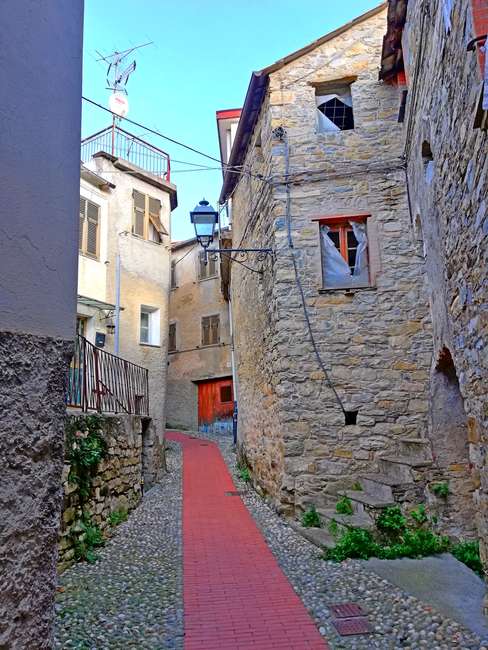
Local History
The history of Liguria and the achievements gained in culture and tradition would need a bigger space than a little page of our website. Here we present, with a great spirit of synthesis, some of the main steps of the hystory of our territory. Coming back to the past, we start from the II millennium BC in the Metal Ages.
The Celtic People in Liguria
Although the origins of the Ligurian peoples are subject of contrasting studies and opinions, a consolidated opinion believe that at some point of its history our Region had to deal with the arrival of Celtic populations. In the II millennium BC, the latter began to expand into southern France and northern Italy. Their presence was very influential: uses and customs of the new people contaminated Liguria with a concrete 'celtization' of culture and traditions. In the opinion of some experts, the reasons for such infiltration were purely commercial: settling in Liguria, Celts could expand their business in the Mediterranean and central-southern Italy.
Some centuries later, Galli was the name that was given by the Romans to the Celtic people and 'Gallia Cisalpina' was the expression to identify the portion of northern Italy including Pianura Padana, Liguria and Veneto. The secular presence of the Celts in our Region also implied a significant impact on the linguistic profile. The word 'Cumba', for example, meant 'oil mill'; the same word can be translated in ligurian dialect with 'Gumbu'.
The Saracen Invasions
The term 'Saracen' was born in the second century after Christ. Violent and bloodthirsty people, the Saracens looted cities by forming slaves and steal all kinds of wealth. They arrived in southern Italy in the eighth century and a hundred years later they reached Liguria and Piedmont. However, these two Regions were not intimidated by the poor refinement of the Saracen predators...take a look at our page Liguria and Piedmont and see how our ancestors defeated their enemies!
The Monks of San Colombano and the Cultivation of the Taggiasca Olive
The cultivation of the olive trees in the villages of our Province was probably introduced by the work of the Monks of San Colombano coming from the Monastery of Lerino. This activity originated in the late Middle Ages and continued uninterrupted to the present day. The name Taggiasca, that identify this particular kind of olive, comes from Taggia, a little village on the west side of Imperia. Here, tradition believes that the first olive grows were implanted. About that, it's interesting to observe how the subsoil of the Lerino Abbey, built in the 12th century, preserves ovens, cellars and even an oil mill.
The cultivation of the olive trees in a steep territory like the Ligurian one required great sacrifices: the monks and our ancestors had to adapt the territory to cultivation through the classic terracing with dry-stone walls (that we translate in dialect 'Fasce'). It was a work of prodigious courage and marvelous workmanship.
The flavor and quality of the Taggiasca Extra Virgin Olive Oil are unique features in the olive growing world. In 1997 was established the DOP - Denominazione di Origine Protetta, an official certification created to preserve and qualify the Taggiasca Olive characteristics. If you want to deepen the topic, do not hesitate to dine in a good trattoria enjoying a 'Coniglio alla Ligure' or a lamb with olives. For other recipes, let's ask to the chefs!
Back